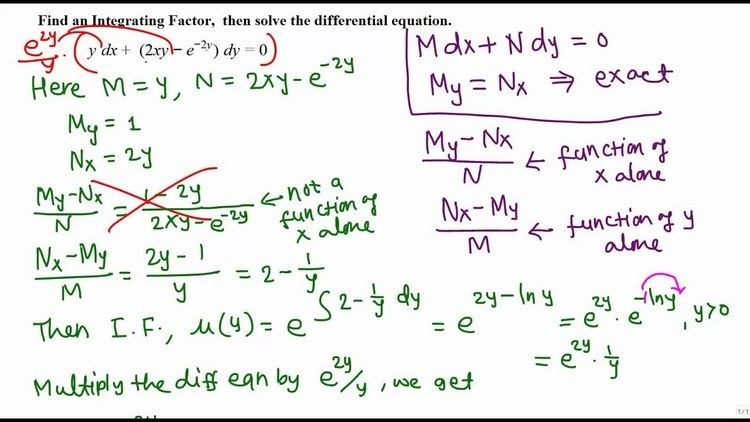Similar Lane–Emden equation, Matrix differential equation, Euler–Lagrange equation | ||

In mathematics, an exact differential equation or total differential equation is a certain kind of ordinary differential equation which is widely used in physics and engineering.
Contents
Definition
Given a simply connected and open subset D of R2 and two functions I and J which are continuous on D then an implicit first-order ordinary differential equation of the form
is called an exact differential equation if there exists a continuously differentiable function F, called the potential function, so that
and
The nomenclature of "exact differential equation" refers to the exact derivative of a function. For a function
Example
The function
is a potential function for the differential equation
Existence of potential functions
In physical applications the functions I and J are usually not only continuous but even continuously differentiable. Schwarz's Theorem then provides us with a necessary criterion for the existence of a potential function. For differential equations defined on simply connected sets the criterion is even sufficient and we get the following theorem:
Given a differential equation of the form (for example, when F has zero slope in the x and y direction at F(x,y) ):
with I and J continuously differentiable on a simply connected and open subset D of R2 then a potential function F exists if and only if
Solutions to exact differential equations
Given an Exact differential equation defined on some simply connected and open subset D of R2 with potential function F then a differentiable function f with (x, f(x)) in D is a solution if and only if there exists real number c so that
For an initial value problem
we can locally find a potential function by
Solving
for y, where c is a real number, we can then construct all solutions.
